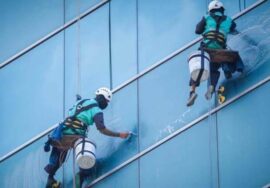
Latest cleaning technology
The Latest Cleaning Technology: Revolutionizing the Cleaning Industry
In today’s fast-paced world, technological advancements are transforming every industry, including cleaning. The cleaning sector, once reliant on manual labor and traditional methods, is now embracing innovative technologies to enhance efficiency, effectiveness, and sustainability. In this blog post, we explore some of the latest cleaning technologies that are revolutionizing how we maintain cleanliness in our homes, offices, and public spaces.
1. Robotic Cleaners
Robotic Vacuums and Mops
Robotic vacuums, such as those from Roomba and Neato, have become household names. These intelligent devices can navigate through your home, avoiding obstacles and thoroughly cleaning your floors. More advanced models now come with mopping capabilities, making them an all-in-one solution for floor cleaning. These robots use sensors and mapping technology to ensure no area is missed, providing a hands-free cleaning experience.
Industrial Cleaning Robots
For larger spaces like warehouses, airports, and shopping centers, industrial cleaning robots are making significant strides. Companies like Avidbots and Tennant are developing autonomous floor scrubbers and sweepers that can clean extensive areas efficiently. These robots are equipped with advanced navigation systems, allowing them to operate independently and avoid obstacles, ensuring a thorough clean with minimal human intervention.
2. UV-C Light Technology
Germ-Killing Power
UV-C light technology has gained popularity due to its ability to kill bacteria, viruses, and other pathogens. This technology is particularly useful in medical facilities, laboratories, and other environments where sterility is crucial. UV-C light devices can disinfect surfaces and air without the use of chemicals, making them an eco-friendly and effective solution.
Portable UV-C Cleaners
Portable UV-C light cleaners are now available for residential and commercial use. These handheld devices can be used to sanitize high-touch surfaces like doorknobs, keyboards, and countertops, providing an extra layer of protection against germs.
3. Electrostatic Sprayers
Efficient Disinfection
Electrostatic sprayers have revolutionized the way we apply disinfectants. These devices charge the cleaning solution as it passes through the nozzle, creating a fine mist that adheres to surfaces more effectively. This technology ensures even coverage and reduces the amount of disinfectant needed, making it a cost-effective and efficient cleaning solution.
Applications in Various Settings
Electrostatic sprayers are now widely used in schools, offices, gyms, and other public spaces to quickly disinfect large areas. Their ability to cover hard-to-reach surfaces makes them ideal for maintaining hygiene in high-traffic environments.
4. Smart Cleaning Solutions
IoT-Enabled Devices
The Internet of Things (IoT) has paved the way for smart cleaning devices that can be controlled and monitored remotely. Smart vacuum cleaners, air purifiers, and even washing machines can now be integrated into home automation systems. These devices can be scheduled, controlled via smartphone apps, and even provide maintenance alerts, ensuring optimal performance.
Data-Driven Cleaning
In commercial settings, data-driven cleaning solutions are becoming more prevalent. Sensors and software can track usage patterns and determine the best times for cleaning, optimizing resources and improving efficiency. For example, smart restrooms can monitor foot traffic and cleanliness levels, alerting staff when cleaning is needed.
5. Green Cleaning Technologies
Eco-Friendly Products
Sustainability is a growing concern in the cleaning industry, leading to the development of eco-friendly cleaning products. These products are made from natural, biodegradable ingredients that reduce environmental impact without compromising cleaning effectiveness.
Water-Saving Technologies
Innovative water-saving technologies are also being implemented to reduce water usage in cleaning processes. For instance, low-moisture carpet cleaning systems use minimal water while still providing a deep clean, making them environmentally friendly and cost-effective.
6. Ultrasonic Cleaning
Precision Cleaning
Ultrasonic cleaning technology uses high-frequency sound waves to create microscopic bubbles that remove dirt and contaminants from surfaces. This method is highly effective for cleaning intricate items like jewelry, medical instruments, and electronic components.
Applications in Various Industries
While commonly used in industrial and medical settings, ultrasonic cleaners are now available for residential use. These devices can clean items that are difficult to sanitize with traditional methods, offering a high level of cleanliness and safety.
Conclusion
The latest cleaning technologies are transforming the industry, making cleaning processes more efficient, effective, and environmentally friendly. From robotic cleaners and UV-C light technology to smart solutions and eco-friendly products, these innovations are setting new standards in hygiene and sanitation. As technology continues to advance, we can expect even more groundbreaking developments that will further enhance our ability to maintain clean and healthy environments. Embracing these technologies not only improves cleaning outcomes but also contributes to a more sustainable and healthier future.








